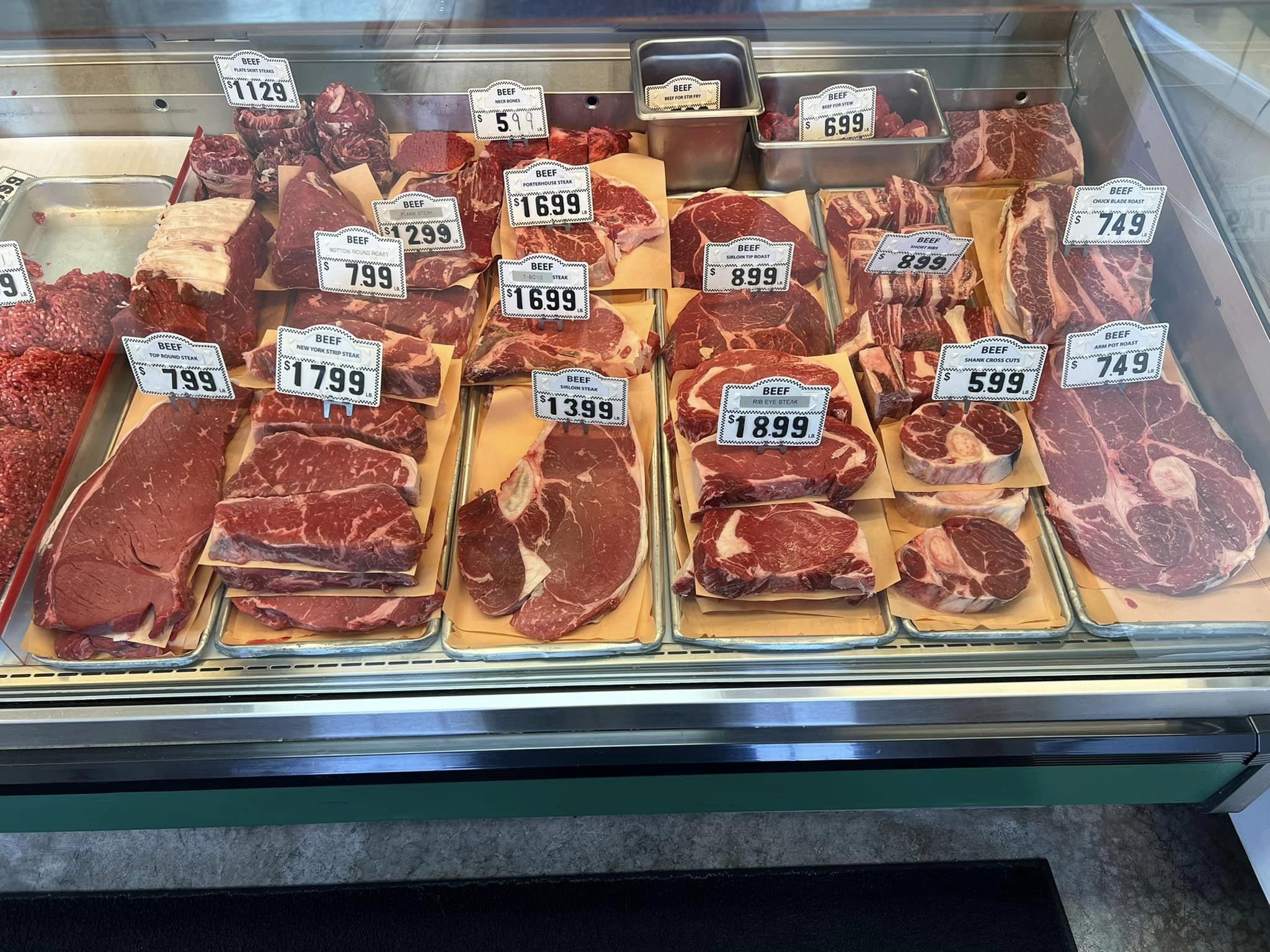Discover Fresh Cuts at Bagley Farms Meat Market Edwardsville IL for Your Following BBQ
Discover Fresh Cuts at Bagley Farms Meat Market Edwardsville IL for Your Following BBQ
Blog Article
Reveal the Art of the Butcher's Cut in a Modern Meat Market
In the ever-evolving landscape of modern meat markets, the butcher's cut has actually transcended its conventional origins, combining age-old craftsmanship with contemporary methods. Today's butchers are not just cpus of meat; they are knowledgeable craftsmens who emphasize sustainability and ethical sourcing. Their proficiency in picking and preparing cuts tailored to specific cooking demands supplies an unparalleled eating experience. What genuinely sets the modern butcher apart is their capacity to create a deeper connection between consumers and the beginnings of their meat. How do these masters equilibrium custom with development, and what implications does this have for the future of meat usage?
Development of Butchery Techniques
The development of butchery techniques shows a rich tapestry of advancement and adaptation driven by advancements in technology, modifications in consumer demand, and a much deeper understanding of meat science. Historically, butchery was a craft gave via generations, with techniques sharpened over centuries to take full advantage of return and flavor. Nonetheless, the industrial transformation introduced automation, transforming conventional techniques and enabling massive handling.
The mid-20th century saw butchery strategies further fine-tuned by clinical insights into muscle mass biology and meat aging, boosting both inflammation and taste. Developments like vacuum cleaner product packaging and refrigeration extended product shelf-life, enabling butchers to expand offerings and boost quality control. This period also marked the increase of customized tools, such as band saws and meat slicers, which increased precision and effectiveness in meat processing.

Electronic systems now assist in monitoring animal provenance and maximizing cuts to fulfill certain customer preferences. Additionally, a rebirth in artisanal butchery has actually emerged, mixing standard skills with modern-day understanding to cater to customers seeking ethical and lasting meat options.
Understanding Meat Cuts
Recognizing the complexities of meat cuts is crucial for both butchers and consumers looking for top quality and value. For butchers, exact cuts show ability and regard for the craft, making sure marginal waste and ideal return.

Recognizing muscular tissue structure is important; muscle mass used extra regularly by the animal tend to be harder and are best fit for sluggish cooking methods, while less-used muscular tissues, like those discovered in the loin, are more tender and perfect for barbecuing or roasting. Familiarity with these differences encourages consumers to make enlightened options, enhancing their cooking endeavors.
Picking High Quality Meat
Choosing the appropriate meat includes greater than simply picking an aesthetically attractive item from the display. bagley farms meat market edwardsville il. The art of picking top quality meat needs a critical eye and understanding of particular attributes that indicate freshness look at here now and quality. Pay interest to the shade; beef should have a bright, cherry-red color, while lamb should display a soft pink tone, and pork a light pink. This suggests the meat is fresh and hasn't been revealed to oxygen for too long.
Secondly, take into consideration the marbling, which describes the white flecks of fat within the muscle mass. Appropriate marbling is a vital indicator of tenderness and flavor, as it melts during cooking, boosting the meat's juiciness. Remember, higher marbling typically associates with exceptional top quality cuts, such as USDA Prime.
Appearance is an additional critical element; meat must really feel strong to the touch, not slimed or extremely soft. In addition, be conscious of the aroma. Fresh meat needs to have a tidy, neutral scent, totally free from any type of sour or off-putting odors.
Matching Cuts With Cooking Methods

On the other hand, harder cuts like brisket and chuck roast are abundant in collagen, which breaks down into jelly when cooked gradually. These cuts are excellent for braising or sluggish roasting, permitting the meat to tenderize gradually and create deep, complex flavors. Likewise, cuts such as brief ribs and pork shoulder make out well with slow-cooking techniques, where prolonged cooking times change their robust structures into succulent recipes.
Lamb shanks and hop over to these guys oxtail, which call for extended food preparation to tenderize, are ideal prospects for stewing or sluggish simmering. These approaches coax out abundant, passionate tastes while maintaining dampness. By comprehending the distinct characteristics of each cut, chefs and home cooks alike can elevate their cooking creations, making sure each meal is both satisfying and unforgettable.
The Butcher's Duty Today
Browsing the evolving Website landscape of the contemporary meat market, the butcher's duty today expands beyond simple preparation of cuts. Contemporary butchers are cooking artisans, instructors, and advocates for sustainable practices.
In enhancement to crafting accurate cuts, butchers currently engage straight with clients, supplying cooking suggestions and customizing selections to match individual requirements and preferences. Their proficiency in meat aging, marbling, and flavor profiles empowers customers to make educated choices, enhancing their cooking experiences. This individualized solution exemplifies the butcher's progressing role as a relied on expert in the kitchen.
In addition, butchers are pivotal in reducing waste, utilizing entire pets to develop diverse items such as sausages and stocks. This thorough strategy not only appreciates the animal yet also straightens with modern sustainability objectives. This way, the modern-day butcher embodies both practice and technology, adjusting to an ever-changing market while preserving the artistry and integrity of their craft.
Conclusion
Mastery in understanding varied meat cuts and quality indications equips butchers to supply enlightened suggestions, straightening specific cuts with optimal cooking techniques. By recognizing historical techniques while accepting contemporary needs, the butcher's role stays vital in today's innovative meat market.
Report this page